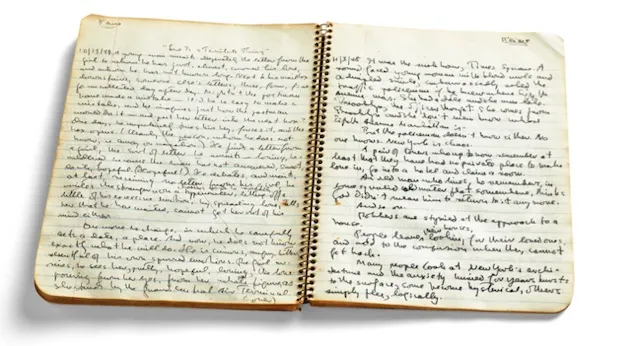You have to keep a dozen of your favorite problems constantly present in your mind, although by and large they will lay in a dormant state. Every time you hear or read a new trick or a
Gian-Carlo Rota, Indiscrete Thoughts (Boston: Birkhäuser Boston, 1997),
202.
Richard Feynman indicated in an interview that he kept a dozen of his favorite problems at the top of his mind. As he encountered new results and tricks, he tried applying them to those problems in hopes of either solving them or in coming up with new ideas. Over time by random but combinatorial chance, solutions or ideas would present themselves as ideas were juxtaposed.
One would suspect that Feynman hadn't actually read Raymond Llull, but this technique sounds very similar to the Llullan combinatorial arts from centuries earlier, albeit in a much more simplified form.
Can we find evidence of Feynman having read or interacted with Llull? Was it independently created or was he influenced?
I had an example of this on 2022-05-28 in Dan Allosso's book club on Equality in the closing minutes where a bit of inspiration hit me to combine the ideas of memes, evolution, and Indigenous knowledge and storytelling to our current political situation. Several of them are problems and ideas I've been working with over years or months, and they came together all at once to present a surprising and useful new combination. #examples
Link this also to the idea of diffuse thinking as a means of solving problems. One can combine the idea of diffuse thinking with combinatorial creativity to super-charge one's problem solving and idea generation capacity this way. What would one call this combination? It definitely needs a name. Llullan combinatorial diffusion, perhaps? To some extent Llull was doing this already as part of his practice, it's just that he didn't know or write explicitly about the diffuse thinking portion (to my knowledge), though this doesn't mean that he wasn't the beneficiary of it in actual practice, particularly when it's known that many of his time practiced lectio divina and meditated on their ideas. Alternately meditating on ideas and then "walking away" from them will by force cause diffuse thinking to be triggered.
Are there people for whom diffuse thinking doesn't work from a physiological perspective? What type of neurodiversity does this cause?
